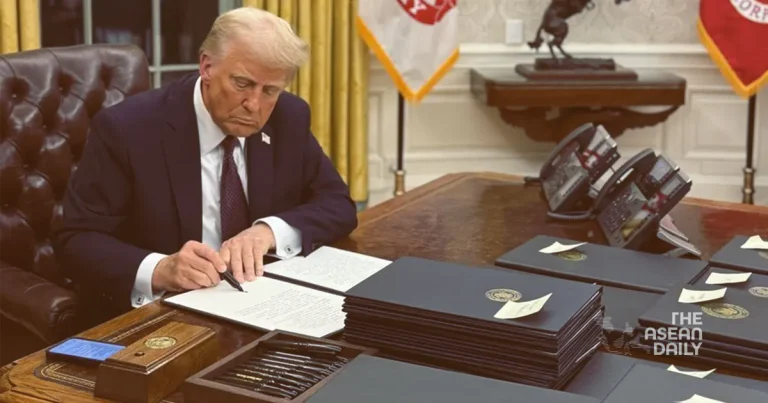21-1-2025 (WASHINGTON) US President Donald Trump has postponed the implementation of China-specific tariffs upon returning to office, opting instead for a more measured approach to global trade concerns.
During his first day back in the Oval Office, Trump signed executive orders directing his administration to conduct a comprehensive review of international trade practices and evaluate Beijing’s compliance with previous agreements, notably the “phase one” deal from his first term.
However, the president maintained his aggressive stance towards America’s immediate neighbours, announcing plans to impose 25% tariffs on both Mexico and Canada starting 1 February. Trump cited concerns over border security and fentanyl trafficking as primary motivations for these measures.
“Canada and Mexico are allowing vast numbers of people to enter, along with fentanyl. Canada has been a very bad abuser in this regard”, Trump stated during an Oval Office briefing.
A confidential administration fact sheet, reviewed by this publication, outlines the president’s vision for “reversing the destructive impact of globalist, America last trade policy”. The document details plans to combat currency manipulation and strengthen domestic supply chains.
Whilst Trump’s campaign promises included sweeping tariffs of 10-20% on all imports and a substantial 60% levy on Chinese goods, his initial actions suggest a more strategic approach. The president indicated he would pursue discussions with Chinese President Xi Jinping before implementing any China-specific measures.
Market response to Trump’s measured stance was immediate, with the US dollar declining 1.2% – its steepest daily drop since November 2023. The decision to delay aggressive tariffs sparked optimism in US equity futures.
The administration has also ordered a review of the US-Mexico-Canada Agreement (USMCA), despite Trump previously hailing it as “the best deal ever negotiated”. Cabinet secretaries have been tasked with assessing its impact on American workers and businesses.
In a notable development, the president has commissioned a feasibility study for an external revenue service dedicated to tariff collection, though questions remain about how this would differ from existing federal mechanisms.
Analysts remain divided on the effectiveness of tariffs in addressing trade deficits and revitalising domestic manufacturing. During his first term, Trump imposed duties on approximately $380 billion worth of imports, yet the long-term economic benefits of such measures continue to be debated amongst economists.




